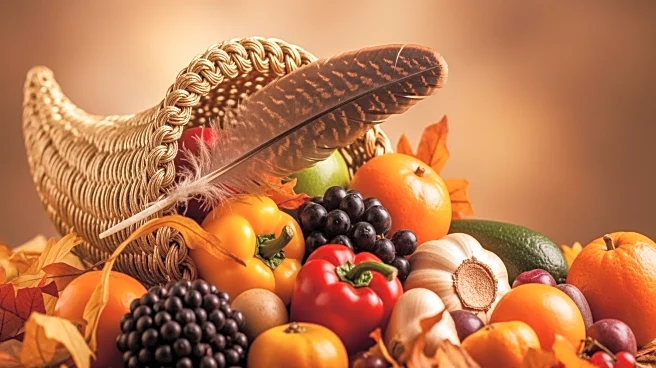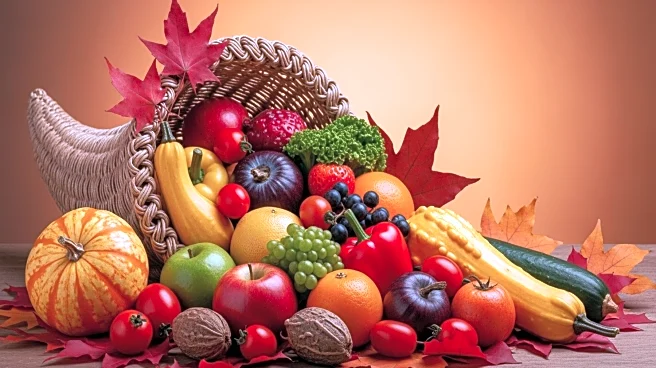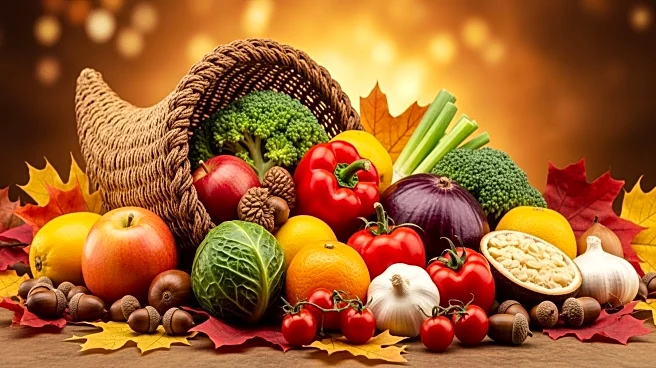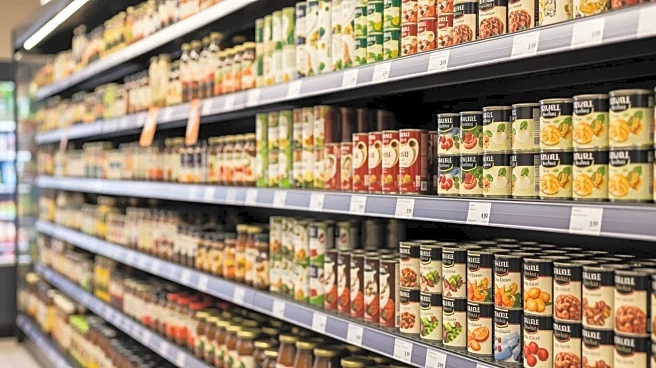What's Happening?
The United States Agriculture Department has reported a significant increase in wholesale turkey prices, with costs rising to $1.32 per pound, marking a 40% increase from last year's average of $0.94 per pound.
This surge is attributed to a decrease in turkey supply, influenced by avian flu outbreaks and slightly weakened demand. USDA data indicates that over 3 million turkeys have been affected by bird flu this year, contributing to a reduction in the number of turkeys raised, which is estimated at 195 million in 2025 compared to 200 million in 2024. Retailers are responding to these wholesale price increases by offering competitive deals to attract budget-conscious consumers, with Walmart and Aldi providing discounted turkey prices and meal deals.
Why It's Important?
The rise in wholesale turkey prices is significant as it impacts the cost of Thanksgiving meals, a major event for American families. While wholesale prices have increased, experts like Bernt Nelson from the American Farm Bureau Federation suggest that consumer prices may not rise as sharply. Retailers often use turkeys as a loss leader, pricing them competitively to draw shoppers into stores. This strategy may mitigate the impact on consumers, ensuring that Thanksgiving remains affordable despite supply challenges. The situation highlights the vulnerability of agricultural supply chains to disease outbreaks and the importance of strategic pricing in retail.
What's Next?
Retailers are expected to continue offering competitive pricing strategies to manage consumer expectations and maintain sales volumes during the holiday season. The USDA and other agricultural bodies may focus on monitoring and controlling avian flu outbreaks to stabilize turkey supplies in the future. Additionally, consumer behavior may shift towards alternative proteins or meal options if turkey prices continue to rise, influencing market dynamics and holiday traditions.
Beyond the Headlines
The increase in turkey prices underscores broader issues in agricultural supply chains, including the impact of disease outbreaks and environmental factors on food production. It also raises questions about food security and the resilience of supply chains in the face of biological threats. Long-term, this situation may prompt discussions on improving disease prevention measures and exploring sustainable farming practices to ensure stable food supplies.











